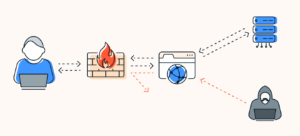Life is a spectacular, unpredictable journey, but sometimes, the unexpected twists come with a hefty price tag. A burst pipe, a sudden car repair, a medical emergency, or—most significantly—a period of joblessness can quickly dismantle a stable financial life. For many, these surprise expenses are not just an inconvenience; they are a crisis that leads directly to high-interest debt, panic, and stress.
The antidote is not luck; it’s a well-constructed financial safety net, commonly known as an emergency fund. This dedicated savings buffer is your first line of defense, a fortress built against the inevitable financial storms of life. It’s the money you need, ready and waiting, so that an emergency doesn’t force you to choose between your credit score and your peace of mind.
Building this fund can seem daunting, but it’s entirely achievable with a strategic, step-by-step approach. This guide will walk you through the process, transforming an abstract financial goal into a concrete, achievable reality.
Step 1: Define Your Financial Baseline and Target Goal
Before you start saving, you need to know what you’re saving for. The golden rule of emergency savings is to aim for enough money to cover three to six months of your essential living expenses.
A. Calculate Your Essential Monthly Expenses
This is not your total monthly budget; it’s your survival budget. Tally up the non-negotiable costs you would absolutely have to pay if your income suddenly stopped.
| Category | Example Expenses |
| Housing | Rent or mortgage, property taxes, essential utilities (water, gas, electric). |
| Food | Groceries (not dining out). |
| Transportation | Car payment, necessary gas, public transit passes, essential car insurance. |
| Debt Minimums | Minimum payments on credit cards, student loans, or personal loans. |
| Insurance | Health, life, and disability insurance premiums. |
Pro-Tip: Exclude discretionary spending like streaming subscriptions, daily coffee runs, excessive entertainment, or gym memberships you would pause in a financial crisis. Your number should reflect the bare minimum to keep a roof over your head and food on the table.
B. Set Your Target Goal
Once you have your Essential Monthly Expense figure, multiply it by the number of months you want to cover (3, 4, 5, or 6).
- 3 Months: A solid starting point, often suitable for those with dual incomes or highly stable jobs.
- 6 Months: The recommended standard, offering a robust shield. Ideal for single-income households, freelancers, those with dependents, or anyone with high-variability income.
Let’s say your essential monthly expenses total $3,000. Your goal would be $9,000 (3 months) to $18,000 (6 months). This number is your mission—write it down.
Step 2: Establish the “Home” for Your Fund
Where you keep your emergency savings is just as important as how much you save. The money must meet two critical criteria: Safety and Liquidity.
A. Keep It Separate and Accessible
Your emergency fund must live in an account that is separate from your regular checking and everyday savings. This separation creates a psychological barrier, reducing the temptation to dip into it for non-emergencies.
Look for a High-Yield Savings Account (HYSA). HYSAs are:
- Liquid: You can access the money without penalty (unlike a CD or retirement account).
- Safe: They are typically FDIC-insured (up to $250,000), meaning the money is protected.
- Interest-Earning: They pay a significantly higher interest rate than a standard bank savings account, helping your money grow faster while it sits waiting.
Crucial Note: Do not invest this money in the stock market. Emergency funds must not be exposed to market risk; their value needs to be stable and predictable.
Step 3: Automate Your Contributions (The “Pay Yourself First” Principle)
Willpower is unreliable; automation is not. The most effective way to build this fund is to remove the decision-making process entirely.
A. Set Up Automatic Transfers
On your payday, have a fixed amount of money automatically transfer from your checking account into your new HYSA.
- Start Small: If your budget is tight, start with a manageable amount, like $50 or $100 per paycheck. The goal is consistency and building the habit.
- Increase Gradually: As you get used to the transfer, look for ways to increase it. Can you cut one monthly subscription? Re-route that $15 into your fund.
This “set-it-and-forget-it” method ensures your fund grows steadily in the background. You won’t miss the money because you never saw it in your main checking account.
B. Use Windfalls Wisely
Got a tax refund, an annual bonus, a work commission, or a financial gift? Designate a large portion of these windfalls—or even the entire amount—to your emergency fund. This strategy can provide a massive boost, dramatically accelerating your progress toward your target goal.
Step 4: Systematically Find Funds (Budgeting and Cutting)
To fuel your savings, you need to free up cash flow. This means an honest, hard look at your spending.
A. Perform a “Spending Audit”
Review your bank and credit card statements from the last three months. Categorize every dollar spent. You will likely find three main areas to trim:
- The Subscriptions Creep: How many streaming services, food boxes, or apps are you paying for but rarely using? Cancel them. That $10 to $20 a month goes straight into your fund.
- The Food Fix: Are you eating out or ordering delivery several times a week? This is a notorious budget killer. Committing to packing a lunch or cooking one more meal at home per week can save hundreds annually.
- The Unused/Underused: Could you save on your car insurance by shopping around? Can you negotiate a lower rate on your internet or cell phone bill? Small, recurring cuts have the biggest long-term impact.
B. Implement the Snowball or Avalanche Method (For Debt)
While building your emergency fund, you should also focus on reducing high-interest debt. High-interest debt (like credit card debt) is an ongoing financial emergency. Once you have saved a Mini-Fund (e.g., $1,000) for very minor emergencies, you can temporarily focus on aggressively paying down that high-interest debt before resuming the full emergency fund goal. This frees up future interest payments to further boost your savings.
Step 5: Protect and Replenish Your Fund
The hardest part about having an emergency fund is using it—and then, immediately, rebuilding it.
A. Define a True Emergency
You must have strict rules for when you will touch this money. It is not for a sale on a TV, an impulse vacation, or an elective procedure.
A True Emergency is:
- A sudden job loss or significant income reduction.
- A massive, unexpected medical bill.
- A necessary, non-deferrable home or vehicle repair (e.g., a furnace breaking in winter).
B. Rebuild Immediately
If you have to use your fund, celebrate that you had the means to handle a crisis without going into debt. Then, immediately pivot back into savings mode.
Treat the fund like an empty gas tank that needs refilling. For a period, every spare dollar should go toward getting the balance back to its original target. This discipline ensures the safety net is always there when you need it next.
Final Thoughts: The Value of Peace of Mind
Saving for the unexpected is less about the dollars and cents and more about the financial freedom it provides. An emergency fund means that when life inevitably throws a curveball, you get to respond with a plan, not with panic. It gives you the space to think clearly, negotiate better outcomes, and protect your long-term goals. Start small, automate your savings, and be consistent—your future self will thank you for the foresight.



